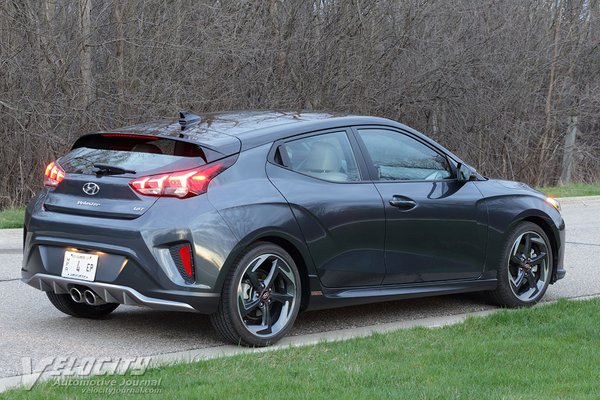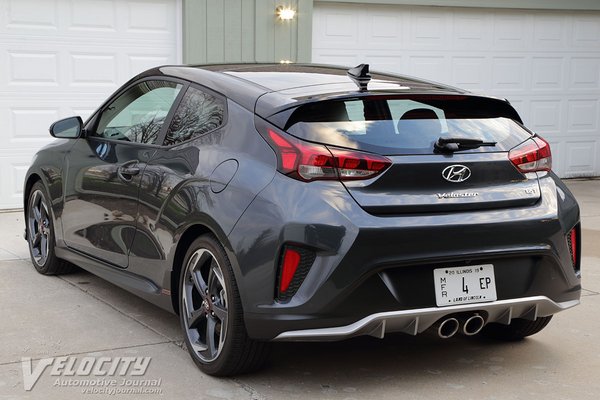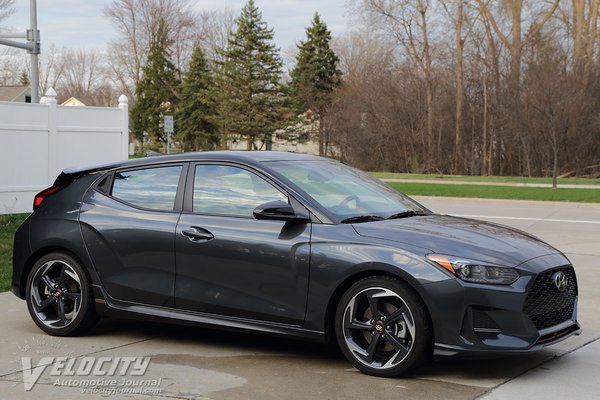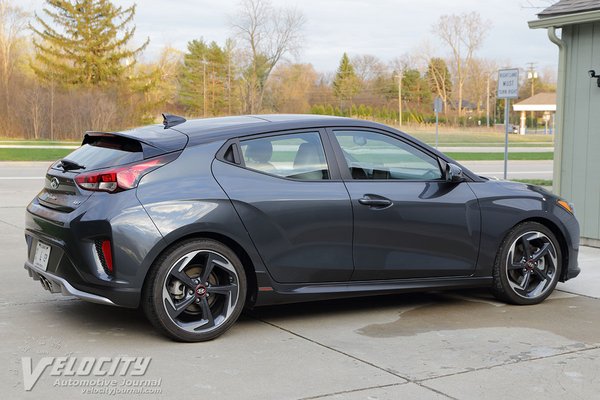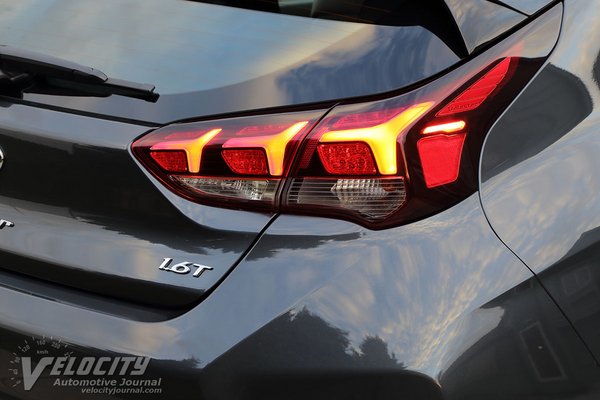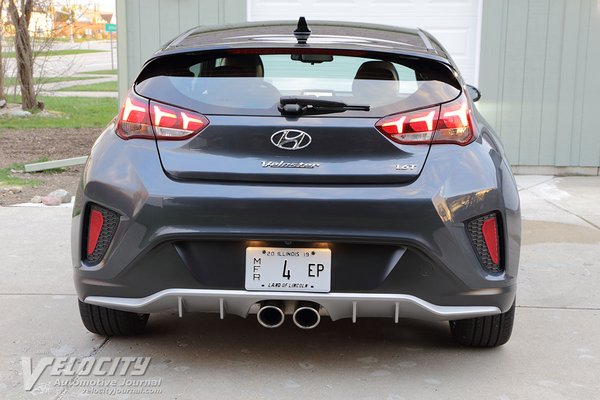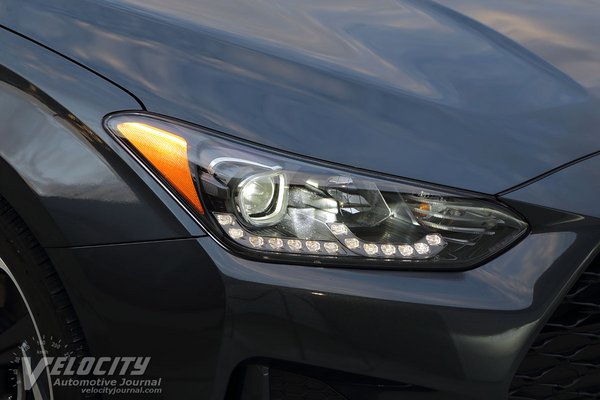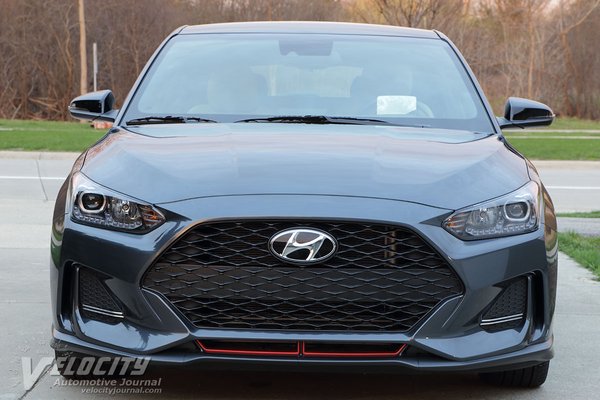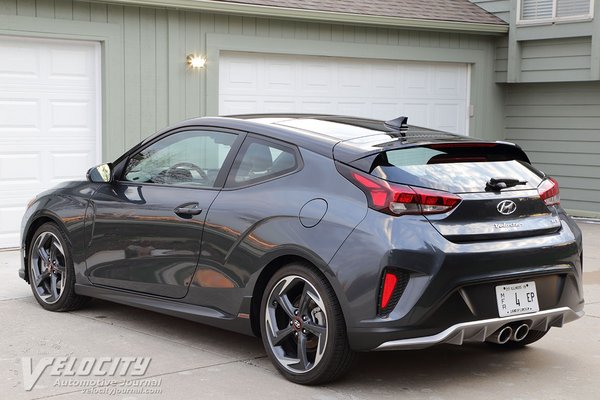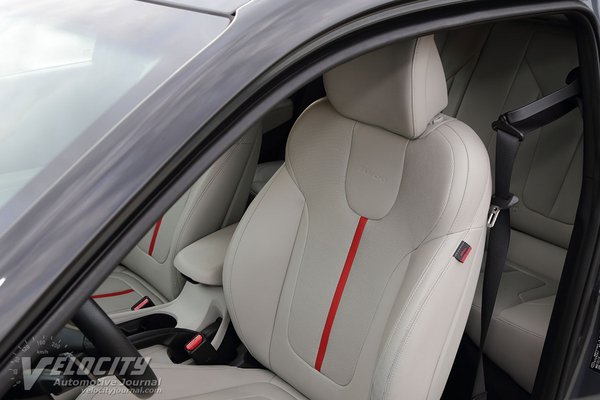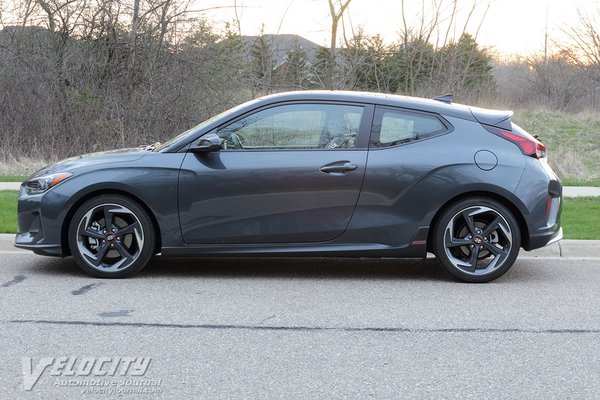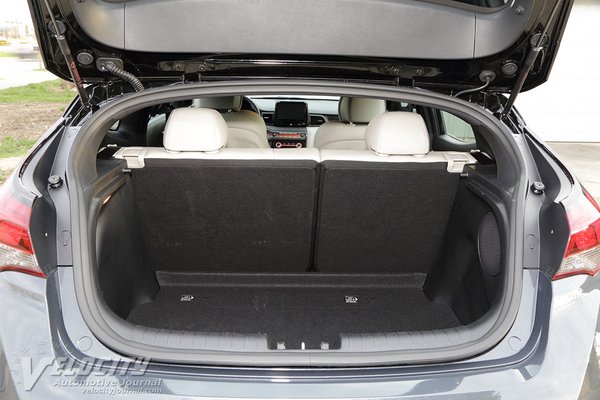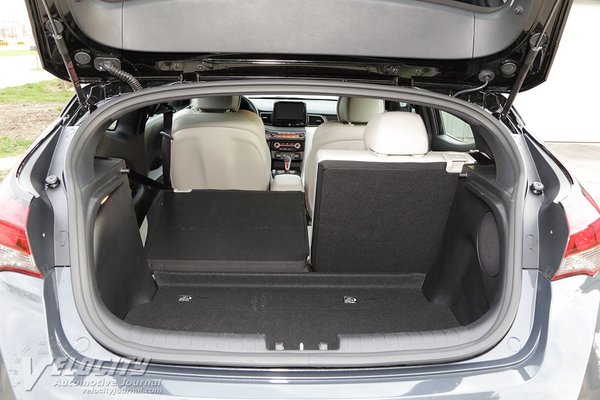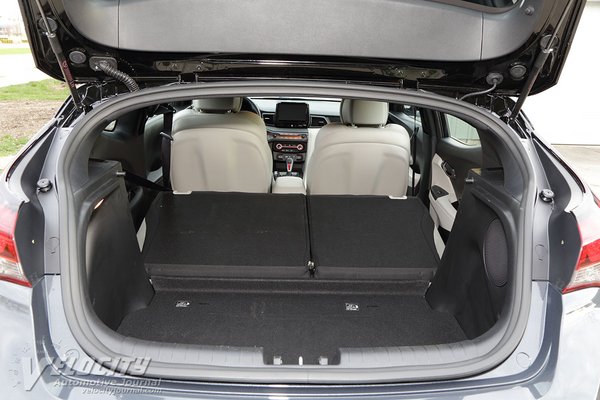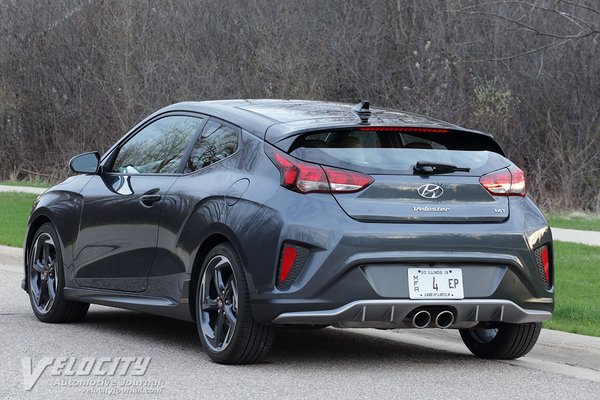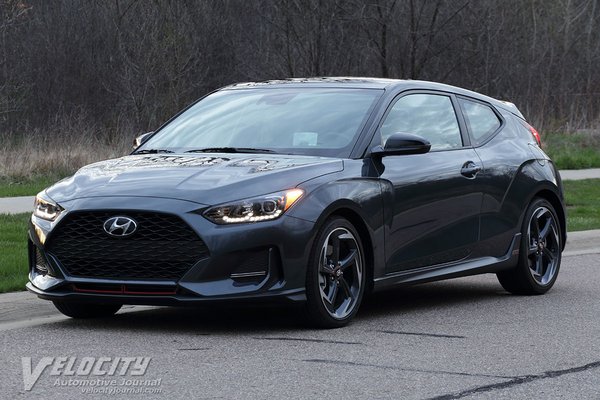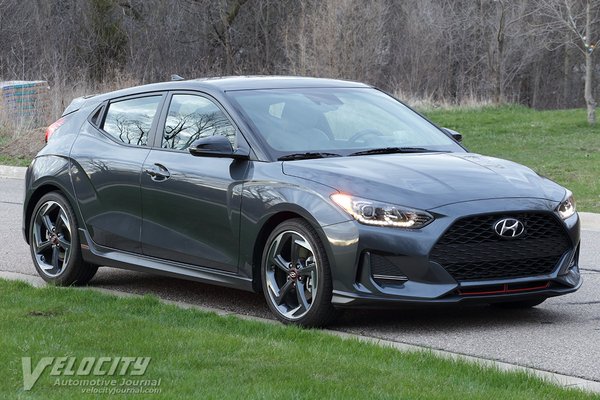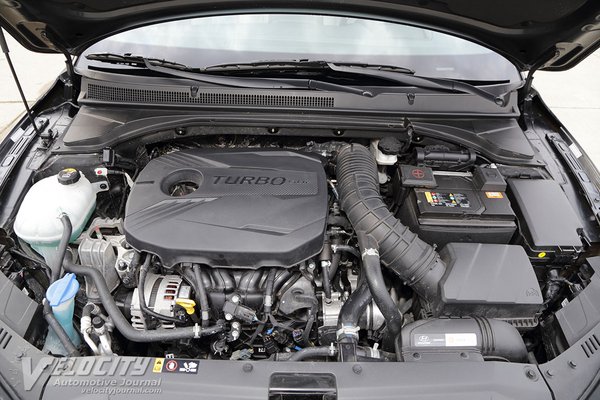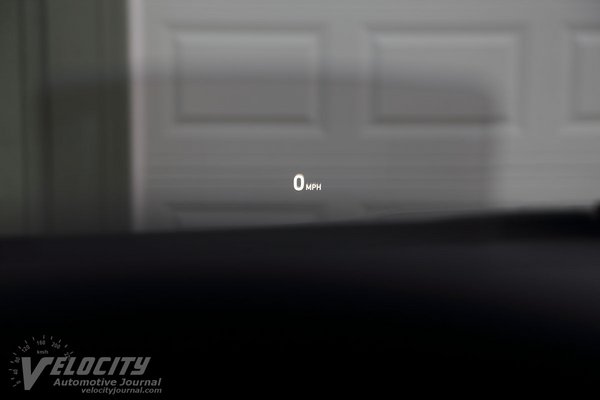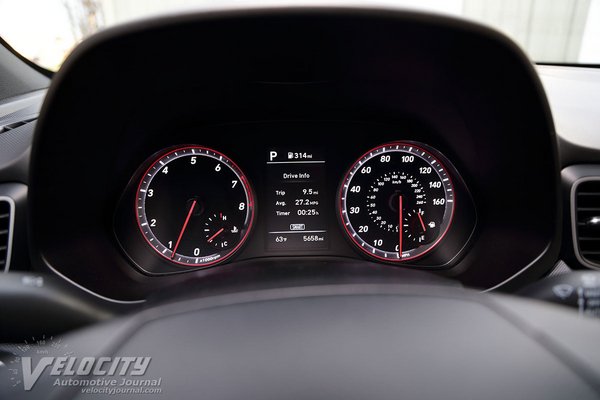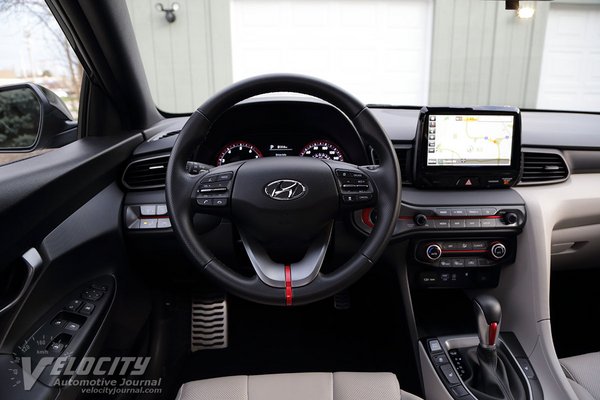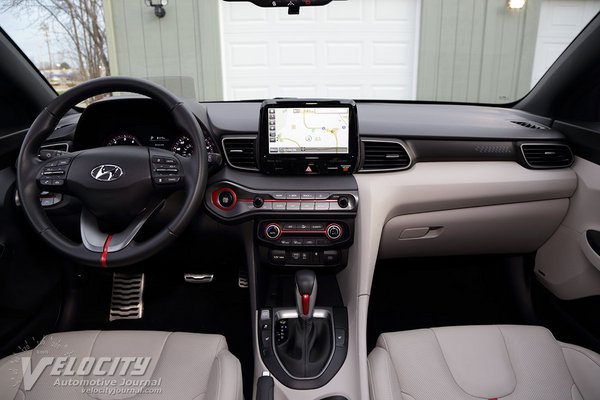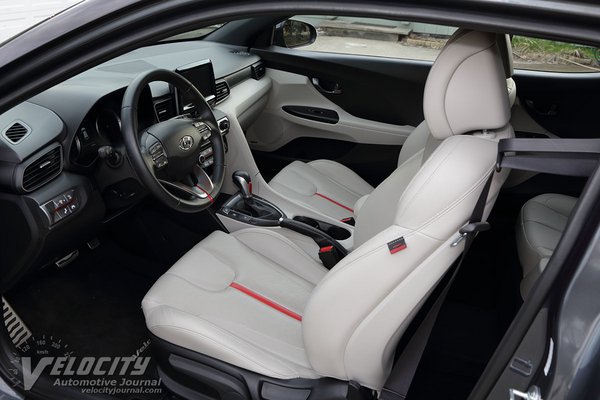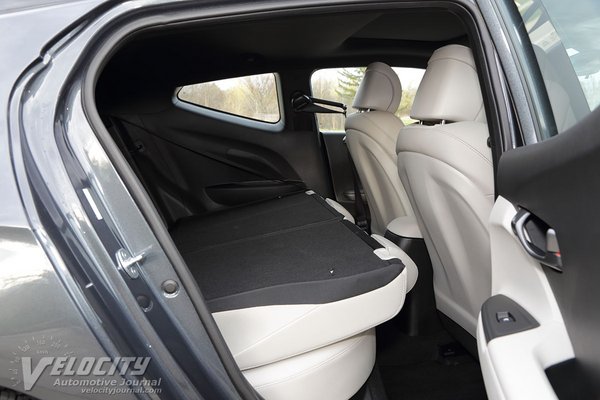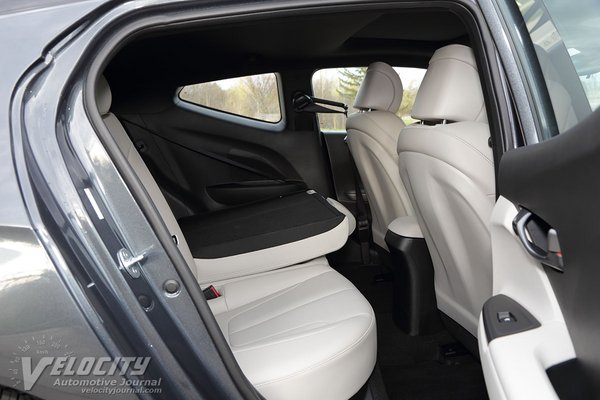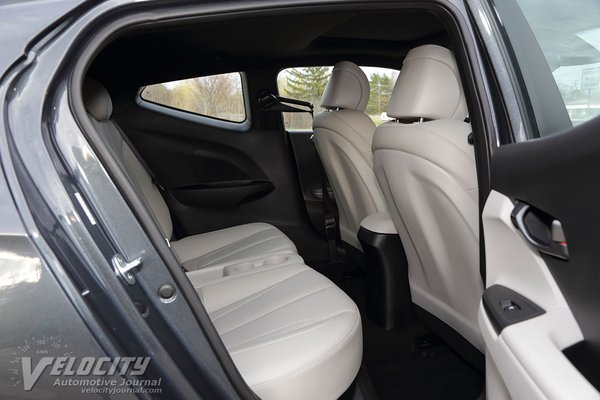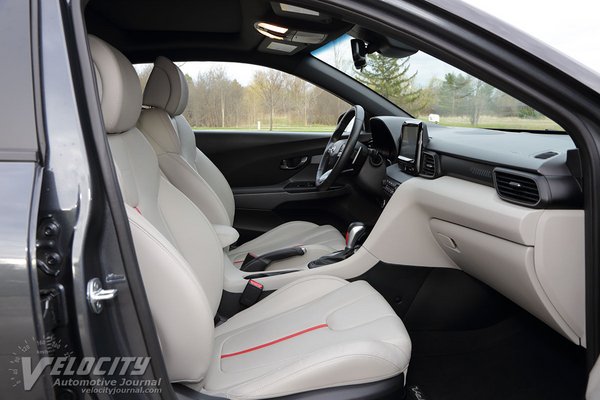2019 Hyundai Veloster Turbo Ultimate
09/25/2019
Shahed Hussain
Now in its second iteration, the Veloster is a unique 3-door hatchback that combines coupe style with sedan practicality. The Veloster's special trick is a rear door only on the right side of the vehicle, allowing convenient access to the back seats from curbside. The Veloster competes directly with the Honda Civic Hatchback and the Toyota Corolla Hatchback.
Hyundai offers eight different variants of the 2019 Veloster, ranging from the base Veloster 2.0 ($18,500), Veloster Turbo R-Spec ($22,900), to the Veloster Turbo Ultimate ($26,650 with the 6-speed manual or $28,150 with the7-speed DCT). A track-focused Veloster N ($26,900/6-speed manual) is aimed at serious enthusiasts. Three different engines are available, starting with a normally-aspirated 2.0L inline-4, a 1.6L turbo, and a 275-hp 2.0L turbo (Veloster N), all driving the front wheels. Transmission options are similarly diverse: a 6-speed manual, 6-speed automatic, and 7-speed dual-clutch automatic transmission (DCT).
We tested a Veloster Turbo Ultimate equipped with the 7-speed DCT ($28,150). At this premium price, Hyundai included a long list of standard equipment: leather seats (heated in front), 8-in. touchscreen with navigation, Infinity audio system, head-up display, smart cruise control, wireless Qi charging, 18-in. dia. alloy wheels, sunroof, rearview camera, and LED headlights. Active safety technologies are extensive: stability control (VSM), forward collision-avoidance (FCA), blind-spot collision warning (BCW), rear cross-traffic collision warning (RCCW), and pedestrian detection.
The 1.6L turbo is the midrange engine in the Veloster lineup. Rated at 201 hp @ 6,000 RPM and 195 lb.-ft. from 1500-4500 RPM, the all-aluminum inline-4 has dual overhead-cams and direct injection. Two transmission options are available: a 6-speed manual or the 7-speed DCT in our test vehicle. Interestingly, the DCT crams fifth (0.809:1), sixth (0.854:1) and seventh (0.717:1) ratios together. Note that sixth gear ratio is higher than fifth. This oddity is due to the dual final drive ratios in the DCT: 4.643:1 (gears 1, 2, 4, 5) and 3.611:1 (gears 3, 6, 7, and reverse). EPA fuel consumption estimates with the DCT are 28/34 MPG (city/hwy.); selecting the 6-speed manual drops fuel efficiency to 26/33 MPG (city/hwy.).
Hyundai engineered a multi-link rear suspension for the Veloster with dampers, coil springs, and stabilizer bar. In the front is the usual MacPherson struts and stabilizer bar. Veloster Turbo models get larger diameter front (24 mm) and rear (19 mm) stabilizer bars. Steering is via a rack-and-pinion system with 2.57 turns lock-to-lock and electric motor assist. Larger front disc brakes (12.0 in. dia. rotors) are also standard on the Turbo; rear discs are 10.3 in. dia. rotors. Tires brands depend on the transmission: Nexen all-season (DCT) or Michelin Pilot Sport 4 summer tires (manual), both are 225/40R18 size, mounted on 18-in. dia. alloy wheels. Curb weight ranges from 2,899-2,987 lbs. when equipped with the DCT.
The Veloster's interior design and materials show a studied balance between cost and material quality. Most surfaces are hard plastics, but panel fits and materials are comparable to other vehicles in its class. The leather-wrapped steering wheel has integrated switches and buttons for phone, audio, and cruise control. The gauge cluster consists of an analog tachometer and speedometer, with a multi-function digital display in between. Smaller dials for the coolant temperature and fuel level are located within the larger gauges. A head-up display on the dashboard projects vehicle speed directly ahead. Aluminum alloy pedals reinforce the Veloster sporting intentions. The 8-in. infotainment touchscreen is mounted between the center dash vents. Buttons and knobs for audio and navigation are located below the touchscreen. Climate control settings are readily accessible on the center stack. Dual 12V power outlets, a USB port, an analog audio jack, and a Qi wireless charging pad connect mobile devices for music and recharging. The center console shifter has a sequential manual shift mode, or the driver can opt to use the small paddles on the steering wheels for gearchanges. A drive mode rocker switch next to the shift lever toggles powertrain settings from Normal, Smart, and Sport.
The driver's 6-way adjustable leather seat offers decent support and comfort; the power lumbar support is appreciated. Front headroom is adequate for occupants under 6 ft. tall. Rear seat accommodations are acceptable for adults shorter than about 5 ft.-8 in., but the seat cushion is low, so thigh support is lacking, but rear legroom is adequate.
Driving the Veloster, we were reminded how much fun it is to wheel around in a nimble sport compact. The chassis is tuned for a tightly damped ride with immediate steering turn-in response. Excellent steering feel is a surprise from a motor-assisted system. The stabilizer bars allow moderate body roll around tight curves, but the firm dampers and springs ensure that the tires remain planted as long as the roads are smooth. On patched pavement, the tires tend to lose contact with the road, causing some wheel hop when the chassis is laterally loaded around curves. The Nexen all-season tires don't offer much dry grip; stickier Michelin summer tires are standard with the 6-speed manual. At full throttle from a stop, the Veloster exhibits mild torque steer, but nothing objectionable. Complementing the sporty chassis tuning, the Veloster's brakes provide decent stopping power with firm, progressive pedal feel.
Of the three available powertrain modes available via the Drive Mode switch, we considered Normal to be best for relaxed cruising, as throttle response under acceleration is sluggish. Sport mode is the most aggressive, launching the Veloster with mild wheelspin and altering shift points to higher RPM. In sport mode, the transmission will not shift automatically into seventh gear. The most versatile option is the Smart mode, an optimal balance of efficiency and performance. The DCT responds quickly to manual shifts in any mode via the paddles or the console shifter. As with most other small displacement turbos, torque output is unimpressive below 2,000 RPM until the turbo spools up to build boost pressure. The turbo inline-4 buzzes at highway speeds above 70 MPH, but is not particularly loud, especially in the deep overdrive seventh gear. Wind and tire noise are reasonably low, which should make the Veloster a decent cruiser for road trips, assuming the roads are not potholed and battered.
The Veloster is a significantly improved replacement over the first-generation vehicle. In this segment, the competition remains tough, especially from the similarly priced Honda Civic Hatchback. For the enthusiast on a budget, the Veloster Turbo Ultimate may not be the optimal choice. If an automatic transmission is not essential, we recommend the less expensive Veloster Turbo R-Spec as the best performance value in the lineup.

